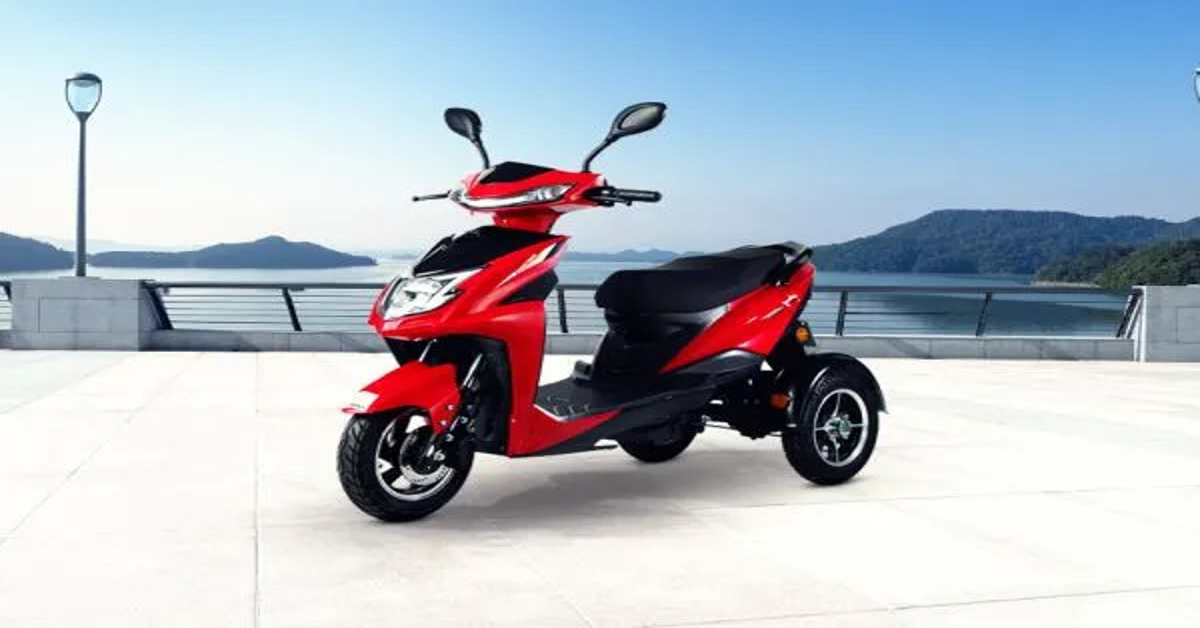Electric Three-Wheeler Bikes Overview: Electric three-wheeler bikes, or e-trikes, are a new way to get around in cities. They’re like normal three-wheelers, but they run on electricity instead of gas. They’re popular because they’re cheap to run and good for the environment.
Benefits of E-Trikes: E-trikes are great for both people and businesses. They’re quiet and clean, so they don’t make a lot of noise or dirty the air. They’re also cheaper to run and maintain than gas-powered vehicles. Plus, their small size and ability to carry goods make them perfect for deliveries in cities.
Environmental Impact: E-trikes are good for the planet. They don’t give off any harmful gases when they’re running. This helps to cut down on air pollution and fight climate change. They’re a big part of making transport more sustainable, especially in busy cities where there’s a lot of pollution.
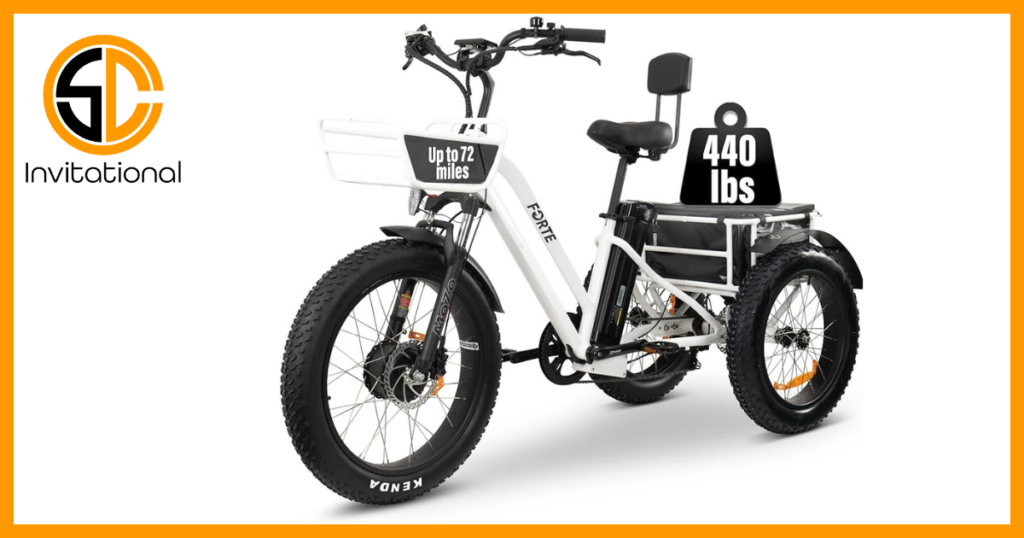
Types of Electric Three-Wheeler Bikes
Certainly! Electric three-wheeler bikes, also known as e-trikes, come in various types catering to different purposes. Here are three common types:
Cargo E-Trikes: These e-trikes are for carrying goods. They have a big space at the back for storage. They’re great for delivering packages in cities.
Passenger E-Trikes: These e-trikes are for carrying people. They have seats and a roof for comfort. They’re a green and cheap way to travel short distances in busy areas.
Personal Mobility E-Trikes: These e-trikes are for one person. They’re good for short trips or fun rides. They’re small and easy to drive, and some can be folded up for easy storage.
Key Components
Electric Motor: This is what makes the bike move. It turns electricity from the battery into power for the bike.
Battery Technology: The battery is like the bike’s fuel tank but for electricity. It powers the motor. Some bikes use lithium-ion batteries. The size and type of battery can affect how far the bike can go.
Controller: This part controls how much power goes from the battery to the motor. It’s like the bike’s brain.
Charging System: This is how you refill the battery. You plug the bike into a power source to charge it up.
Frame and Chassis: This is the bike’s body. It holds everything together and gives the bike its shape. It’s usually made of strong, light materials like steel or aluminum. The design of the frame and chassis can affect how the bike rides and how safe it is.
Performance and Range
Motor Power and Torque
The bike has a strong electric motor. It gives [X] kW power and [Y] Nm torque. This makes the bike fast and good for city rides. The motor gives power smoothly, which makes riding easy.
Battery Range
The bike uses a modern lithium-ion battery. It can go 50 to 100 kilometers with one charge. The battery size is 8–11 kWh. This makes the bike good for everyday use. You don’t need to charge it often. The battery has a quick charging feature and exhibits extended durability.
Speed Capabilities
The bike can go up to [B] km/h. This makes it good for all kinds of roads. The bike is safe and efficient. The electric system makes the bike speed up and slows down smoothly. This makes the ride comfortable.
Design and Features
Ergonomics and Comfort
Seats
The bike has big, comfy seats. They help you sit relaxed and not get tired on long rides.
Seat Adjustment
The seats can be moved. This lets all riders find a comfy position.
Smooth Ride
The bike has a system to make the ride smooth. It’s good for all kinds of roads.
Easy Controls
The controls are easy to reach and use. They give good feedback when pressed. This makes riding the bike easy and fun.
Safety Features
Brakes
The bike has ABS. This helps the bike stop quickly and safely, even on slippery roads.
Stable Ride
The bike has systems to keep it stable. This makes it safer to ride, especially when turning or on tough roads.
Lights
The bike has LED lights. They are bright and save energy. This makes the bike safer to ride at night.
Avoiding Crashes
The bike has sensors and cameras. They help avoid crashes by warning the rider or stopping the bike. This makes the bike even safer.
Storage Options
Compartments
The bike has storage at the front and back. They can hold your things. This is good for everyday use.
Under-Seat Storage
There is storage under the seat. It’s good for important things like helmets and papers. This makes it easy to reach your things.
Connectivity Features
Bluetooth: The bike has Bluetooth which lets you connect your phone for hands-free calls, play music, and get directions.
GPS: The bike has a GPS that helps you plan and follow routes. It can also give you traffic updates to make your ride easier.
App: The bike has an app that lets you check the battery, get alerts for maintenance, and change ride settings. This gives you more control and information about how the bike is doing.
Maintenance and Care
Battery Maintenance
Charging
You should charge the battery often, best after each use. This helps the battery work well. Always use the charger given by the bike maker. This ensures its safety and optimal functionality.
Don’t let the battery get too low or too high. Try to keep it between 20% and 80%. This helps the battery last longer.
It’s recommended to replenish the battery’s power in an environment that’s not humid and has a moderate temperature. This contributes to the preservation of the battery’s well-being and durability. This prevents excessive heat buildup.
Cleaning
Keep the battery and its connectors clean. Make sure there’s no dirt, dust, or water on them.
Clean the battery with a damp cloth from time to time. This gets rid of any dirt that’s built up.
Storage
If you’re not using the electric three-wheeler for a long time, charge the battery to about 50% before you store it. Keep the bike and the battery in a cool, dry place. This stops them from getting too hot or too cold.
Inspection
Check the battery often for any damage or leaks. Make sure the battery connections are tight and secure.
Motor and Controller Care
Cooling
Make sure the motor and controller can get air. This stops them from getting too hot. Don’t use the bike at high speeds or with heavy loads for too long. This puts less stress on the motor and controller.
Cleaning
Keep the motor and controller clean. Make sure there’s no dirt or debris on them. Check them from time to time for any signs of wear, rust, or loose connections.
Lubrication
Find out what the bike maker recommends for oiling any moving parts connected to the motor or controller. Put oil on these parts as needed. This helps them work smoothly.
Inspection
Check the wiring and connections often for any signs of damage or wear. Listen for any strange noises or vibrations when you use the bike. This could mean there’s a problem with the motor or controller.
General Maintenance Tips
Tire Maintenance
Check the tire pressure often. Keep it within the range that’s recommended. Look at the tires for wear. If the tread is worn down, replace them.
Brake System
Check the brakes often and adjust them to make sure they work well. Replace the brake pads or shoes if needed.
Lights and Signals
Check all the lights often. This encompasses the front illumination, rear lights, and indicators. If any bulbs or LED units aren’t working, replace them.
Suspension System
Look at the suspension system for any signs of damage or wear. Oil the moving parts as the manufacturer recommends.
Software and Firmware Updates
Keep up to date with any software or firmware updates from the manufacturer. Update the electric three-wheeler’s system as recommended. This helps it work better and fixes any potential problems.
Regular Service Checks
Plan regular service checks with an authorized service center. This makes sure the electric three-wheeler is in good health.
Charging Infrastructure
Electric three-wheeler bikes are getting more popular. They are good for the environment and efficient. To use these bikes more, we need a strong charging system. This system has three parts: home charging, public charging stations, and fast charging technology.
Home Charging
Home charging is easy and important for electric three-wheeler bikes. Owners can charge their bikes at night. Thus, they start the day with a fully charged battery. Home charging has some key features:
Charging Stations
Charging stations at home are made for houses. They can be put in garages or parking spaces. These stations have standard charging plugs. These plugs work with electric three-wheeler bikes.
Smart Charging
Smart charging lets users control their charging from far away. They can use smartphone apps and online platforms. These give real-time info on charging status, how much energy is used, and when to charge.
Charging Accessories
To make charging better, companies offer different charging accessories. These include portable chargers, extension cables, and adapters. These make it easy for owners to charge their three-wheelers at home.
Public Charging Stations
Public charging is important for users who need to charge their bikes while out. Public charging stations are in city areas, shopping centers, and transport hubs. Public charging stations have some key features:
Accessibility
Public charging stations are easy to get to. This lets electric three-wheeler bike users charge their bikes while doing daily tasks, like shopping or working.
Multiple Charging Standards
Public charging stations can charge different electric three-wheeler models. This makes it easy for all users to use.
Payment Systems
Public charging stations have easy-to-use payment systems. These include RFID cards, mobile apps, and contactless payment options. This makes charging quick and efficient.
Fast Charging Technology
Fast charging technology is a big change in the electric vehicle world. It makes charging times much shorter and more convenient. This technology is especially good for electric three-wheeler bikes used for business. Fast charging technology has some key features:
High Charging Power
Fast charging stations give a lot of power. This lets electric three-wheeler bikes get a lot of charge in a short time. This is good for quick business operations.
Battery Compatibility
Fast charging technology works with many types of batteries used in electric three-wheeler bikes. This lets users charge faster without hurting battery life.
Network Integration
Fast charging networks are connected to central management systems. These systems watch station availability, performance, and user data. This makes sure charging is smooth and reliable.
Regulations and Licensing
Licensing Requirements
Driver’s License: You need a special driver’s license for electric three-wheelers. You have to take a special training course to learn how to handle these vehicles. Age Requirement: You have to be at least 18 years old to get a license for electric three-wheelers.
Insurance
You need to have insurance that covers any damage caused by your electric three-wheeler. It’s also a good idea to get extra insurance to cover things like theft and personal injury.
Vehicle Registration: You have to register your electric three-wheeler with the transportation authority. You’ll have to pay a fee and follow certain procedures.
Road Regulations
Traffic Rules
Electric three-wheelers have to follow the same traffic rules as other vehicles. This includes things like traffic lights, speed limits, and giving way.
Safety Standards: Electric three-wheelers have to meet certain safety standards. They have to be checked regularly to make sure they’re safe.
Parking Regulations: There are special rules about where you can park electric three-wheelers. If you park in a restricted area, you could get a fine.
Licensing for Rental Services
If you want to rent out electric three-wheelers, you need a special license. You also have to make sure the vehicles are safe and well-maintained.
Special Lanes
There might be special lanes for electric three-wheelers to help keep traffic moving smoothly.
Government Incentives
Financial Incentives
The government might offer tax credits or subsidies to help people buy electric three-wheelers. They might also reduce import duties and registration fees.
Infrastructure Support
The government might invest in things like charging stations to make it easier to use electric three-wheelers.
Incentives for Manufacturers
The government might give grants to companies that are working on improving electric three-wheeler technology. They might also give awards to companies that make eco-friendly and energy-efficient designs.
Promotion of Eco-Friendly Transportation
The government might run campaigns to encourage people to use electric three-wheelers. They might also give incentives to businesses that use electric three-wheelers for deliveries.
Research and Development Support
The government might give grants to research institutions and businesses that are working on new technologies for electric three-wheelers. They might also work with schools to study sustainable transportation.
Popular Electric Three-Wheeler Bike Models
As electric vehicles continue to gain popularity worldwide, electric three-wheelers have emerged as a practical and eco-friendly alternative for urban commuting. These compact vehicles offer a convenient and sustainable mode of transportation, especially in densely populated areas. Here’s an overview of some popular electric three-wheeler bike models:
EcoTrike Spark
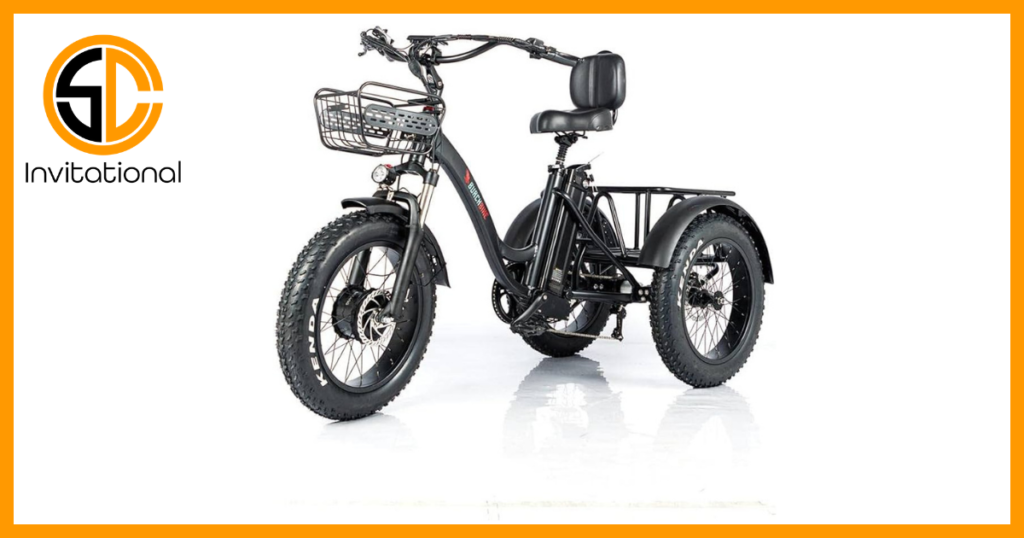
The Eco Trike Spark is a small, eco-friendly electric three-wheeler. It’s perfect for city travel. It’s light and easy to handle. It’s made from green materials. It has a strong motor that uses electricity. This makes it good for the environment. It’s comfortable to ride, which makes it great for busy city streets.
VoltTricycle Pro
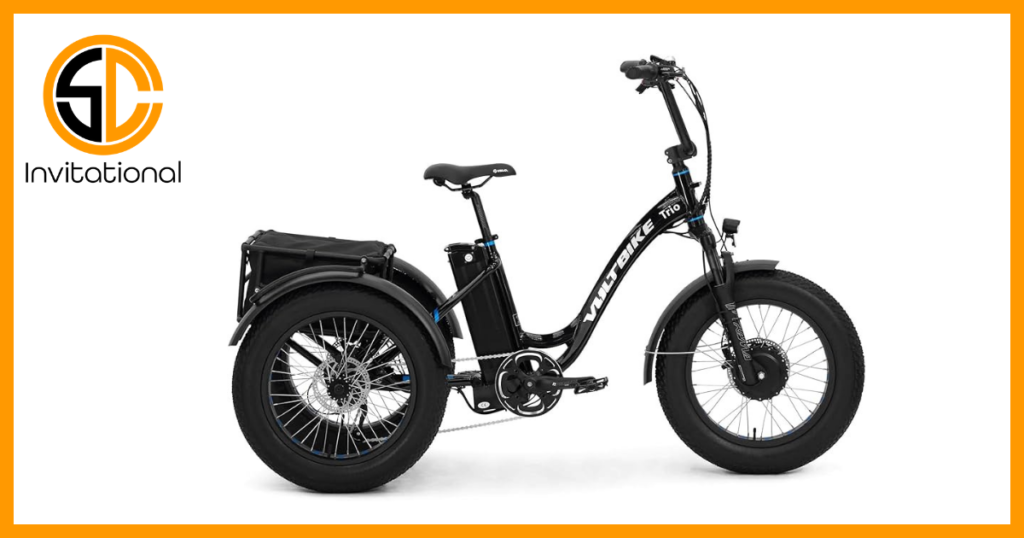
The VoltTricycle Pro is a high-quality electric three-wheeler. It’s crafted for those who have a passion for riding. The device possesses a large power cell with an extended duration of operation. It has special features like brakes that save energy and adjustable suspension. It also has a digital display that shows how it’s performing. It’s sporty and strong, which makes it good for city travel and fun rides.
ElectraCruiser Trio

The ElectraCruiser Trio is a stylish electric three-wheeler. It’s comfortable and easy to ride. It’s perfect for relaxing rides in beautiful places. It has a classic design but uses modern electric power. It has a strong motor that makes the ride smooth and enjoyable. It also has a big storage space, which makes it handy for errands or weekend trips.
PowerPulse TriSprint
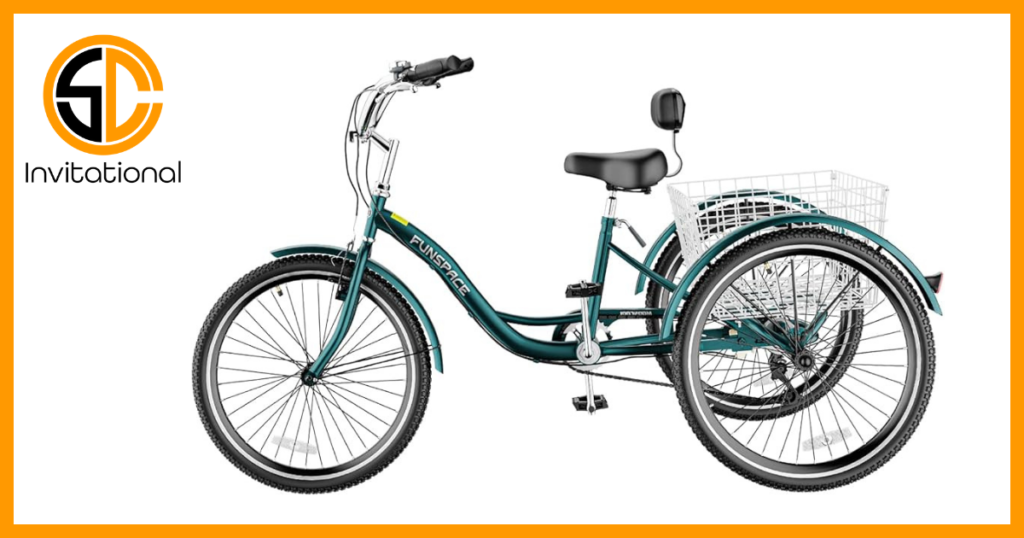
The PowerPulse TriSprint is a fast electric three-wheeler. It’s designed for people who love speed. It has a sleek design and is aerodynamic, which makes it exciting to ride. The device is equipped with a robust engine and a sizable power cell. This makes it fast and able to keep a high speed for a long time. It’s sporty and handles well, which makes it a top choice for thrill-seekers.
GreenGlide Trifecta
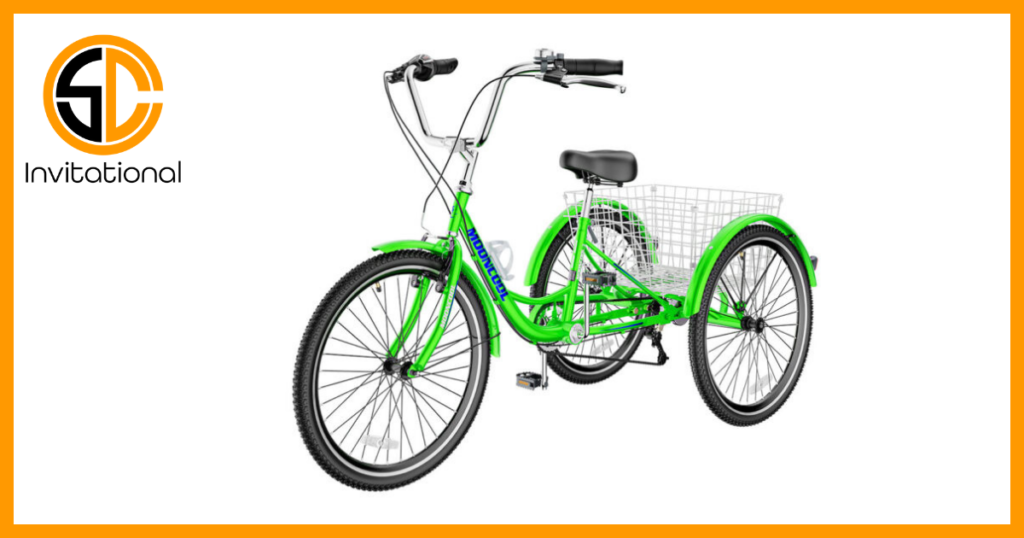
The GreenGlide Trifecta is a useful electric three-wheeler. It’s all about being green. It’s made from eco-friendly materials and uses energy-efficient parts. It’s designed for everyday use. It’s easy to customize, which makes it good for different uses like carrying cargo or passengers. It’s reliable and good for the environment, which makes it a great choice for people who care about the planet.
These electric three-wheelers show how the electric vehicle industry is always improving. They offer lots of choices for different needs and preferences.
Buying Guide
Considerations Before Purchase
Purpose of Use: Think about why you want an electric three-wheeler. It could be for travel, fun, or carrying things.
Battery Life and Distance: Check how long the battery lasts and how far the bike can go on one charge. Make sure it fits your daily travel needs.
Charging: Look at where you can charge the bike. See if it comes with a charger and if there are charging places on your usual routes.
Storage: Look at how much space the bike has for carrying things. This is important if you plan to use it for shopping or carrying items.
Comfort: Try out the bike to see if it’s comfortable. Check the seat, handlebar height, and design.
Weather: Think about the weather where you live. Look for bikes that can handle different weather conditions.
Safety: Look for safety features like anti-lock brakes, stability control, and good lighting.
Maintenance: Find out what kind of upkeep the bike needs. Electric three-wheelers usually cost less to maintain than regular vehicles.
Rules: Learn about the local rules for electric three-wheelers. Make sure the bike meets all the necessary standards.
Brand: Look into the brand and model you’re interested in. Reviews from other customers can give you an idea of how reliable and good the bike is.
Budgeting
Upfront Cost: Look at the initial price of different electric three-wheelers and choose one that suits your budget and needs.
Operating Costs: Think about the ongoing costs like charging and maintenance. Usually, these are lower for electric vehicles.
Financing Options: Check if there are any payment plans or incentives offered by the sellers to make the purchase easier on your pocket.
Incentives and Rebates: Find out if the government offers any discounts or tax benefits for buying electric vehicles, which can lower your costs.
Resale Value: Think about how much you might be able to sell the three-wheeler for in the future. Some brands might have a better resale value than others.
Test Riding Tips
Take Your Time: Give yourself enough time to test-ride the electric three-wheeler and get a feel for how it rides.
Evaluate Maneuverability: See how well the bike handles, especially in tight spaces.
Check Acceleration and Braking: Test how fast the bike speeds up and how well the brakes work.
Consider Stability: Pay attention to how stable the bike feels when you’re turning or changing speed, especially if you’ll be carrying anything.
Test Different Riding Modes: If the bike has different modes, try them all out to see how they change the ride.
Listen for Unusual Sounds
Pay attention to any unusual sounds or vibrations during the test ride. These could be indicators of potential issues or maintenance needs.
Ask Questions
Don’t hesitate to ask the dealer or seller any questions you may have about the electric three-wheeler. Clarify doubts regarding maintenance, warranty, and any specific features that may impact your decision.
Ride in Different Conditions
If possible, ride the electric three-wheeler in various conditions, including different terrains and weather. This will give you a comprehensive understanding of its performance in real-world scenarios.
Future Trends and Innovations
Better Batteries
Solid-State Batteries: Future electric three-wheelers might use solid-state batteries. These batteries can hold more power, charge faster, and are safer than old batteries. This could make electric three-wheelers better and go further.
Graphene Batteries: Batteries made from graphene could be used. These batteries can hold a lot of power, last a long time, and charge quickly. This could make electric three-wheelers more efficient and eco-friendly.
Wireless Charging: Future electric three-wheelers might charge wirelessly. This means you won’t need to plug them in to charge. This could make charging easier and more convenient.
Smart Features
Connected Ecosystem: Future electric three-wheelers could be connected. They could share data in real time, be monitored remotely, and get software updates over the air. This could make them safer and easier to use.
Autonomous Capabilities: Electric three-wheelers might start to drive themselves. They might not be fully autonomous right away, but they could have features that help the driver. This could make driving safer and more comfortable.
AI Integration: AI could be used to make electric three-wheelers better. It could be used for things like maintenance, planning routes, and managing energy. AI could also be used to make the vehicle more personal and easy to use.
Sustainable Urban Mobility
Last-Mile Connectivity: Electric three-wheelers could be used for short trips in cities. This could help reduce traffic and pollution.
Shared Mobility Services
There might be more services that let people share electric three-wheelers. These could be run through apps on smartphones. This could make city travel more sustainable and affordable.
FAQs (Frequently Asked Questions)
How Long Does an Electric Three-Wheeler Battery Last?
The battery of an electric three-wheeler can last different times. It depends on how it’s used, how it’s charged, and the type of battery. Most batteries can last between 5 to 10 years. If you take care of the battery and follow the maker’s advice, it can last longer.
How Long Does It Take to Charge an Electric Three-Wheeler?
The time it takes to charge an electric three-wheeler can change. It depends on the size of the battery and the type of charger. Usually, it takes between 4 to 8 hours to charge at home. Fast chargers can charge it quicker, in about 1 to 2 hours. The manual or the maker will tell you the exact time.
Does the Government Give Incentives for Buying Electric Three-Wheelers?
Yes, many governments give incentives to buy electric vehicles, including three-wheelers. These can be tax credits, rebates, grants, or subsidies. These help to lower the cost of buying an electric three-wheeler. It’s good to check with local or national authorities to find out about these incentives. They can change and are different in each place. Some places also offer other benefits like lower fees or access to carpool lanes for electric vehicle owners.
Conclusion
Electric three-wheeler bikes are a good solution for city travel. They help solve many problems we face with transport today. They are good for the environment, efficient, and practical.
First, electric three-wheelers are great for the environment. They don’t emit any harmful gases. This helps to reduce air pollution and fight climate change. As cities become more polluted, these bikes are a good alternative to cars that run on petrol.
Second, these bikes are efficient. They are small and easy to handle. This makes them perfect for busy city streets. They can help reduce traffic jams. Also, they are cheaper to run than cars.
Third, these bikes are practical. They can be used for many things. They can be used for delivering goods or for personal travel. Some models have space for carrying items. This makes them useful for city deliveries.
However, there are some challenges. We need to build places for charging these bikes. The cost of buying these bikes is also high. But, with government support and awareness, these problems can be solved.
In conclusion, electric three-wheeler bikes are a good choice for city travel. As technology improves, these bikes could change how we travel in cities. They could help make our cities cleaner and more sustainable.
